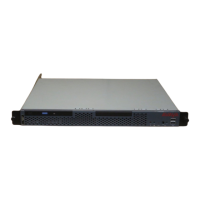High-level overview
Migrating to the Avaya S8700 or S8710 Media Server 29
June 2004
High-level overview
NOTE:
This section applies to the S8700 or S8710 Multi-Connect configuration only.
The migration from a DEFINITY ECS R or SI platform to the Avaya S8700 or S8710 Media Server with
Avaya G650 Media Gateway (S8700 or S8710 Multi-Connect configuration) may be done in stages. The
order in which these stages are completed, in most cases, depends on the resources available, the
personnel available to perform them, and the customer’s desire to minimize downtime. There needs to be
careful coordination with the customer, as some of the operations required are service affecting.
The recommended process is based on several assumptions:
• The TN2312BP IP Server Interface (IPSI) circuit packs are installed ahead of time in the
expansion port networks (EPNs) and processor port network (PPN—optional).
• Most PPNs may contain an IPSI, particularly for direct-connect systems.
• The general process is the same regardless of reliability.
The high level stages are:
• Install and configure the S8700 or S8710 Media Server complex.
• Transfer existing DEFINTY translations to Avaya Communication Manager residing on the
S8700 or S8710 Media Servers. Add new translations for the IPSI circuit packs.
• Replace expansion interface and maintenance circuit packs in all the existing DEFINITY ECS
port networks (PNs) with upgraded circuit packs (TN570B, vintage 7, or later; TN775D).
• Replace tone clocks with TN2312BP IPSI circuit packs in the designated EPNs and PPN
(optional).
• Convert the PPN to a PN.
• Cut over to S8700 or S8710 Media Server control.
• Complete the migration steps, such as enabling alarm reporting and registering the system.
• Test the S8700 or S8710 Multi-Connect configuration.
The order that the high-level stages are listed above represents a recommended sequence to follow. Some
of the stages can be done in a different sequence without causing any negative consequences. Local
practice and resource management dictates the actual sequence.
IPSI placement decisions
In a direct connect system we install IPSIs in the PPN rather than an EPN because of the fiber
connections and administration among the PNs. If the IPSIs are installed in an EPN in a 3-cabinet system,
you would have to reconnect and readminister the optical fiber connecting the EI circuit packs. In a 2-
cabinet system, this would not be a problem. Even in a center stage switch (CSS) system, installing IPSIs
in the PPN is a good idea because it speeds up the system startup.
You want to put the rest of the IPSIs in as many different cabinets as you can. For example, putting IPSIs
in both halves of a dual PN cabinet is not a good idea; if the cabinet dies, you lose 2 IPSI PNs. However,
if in a 10-EPN system, 7 of the EPNs are DS1-C remoted and the other 3 PNs are 1 PPN cabinet and 1
dual PN cabinet, then putting IPSIs in both halves of the dual PN and the converted PPN eliminates
running remote IPSI connections.

